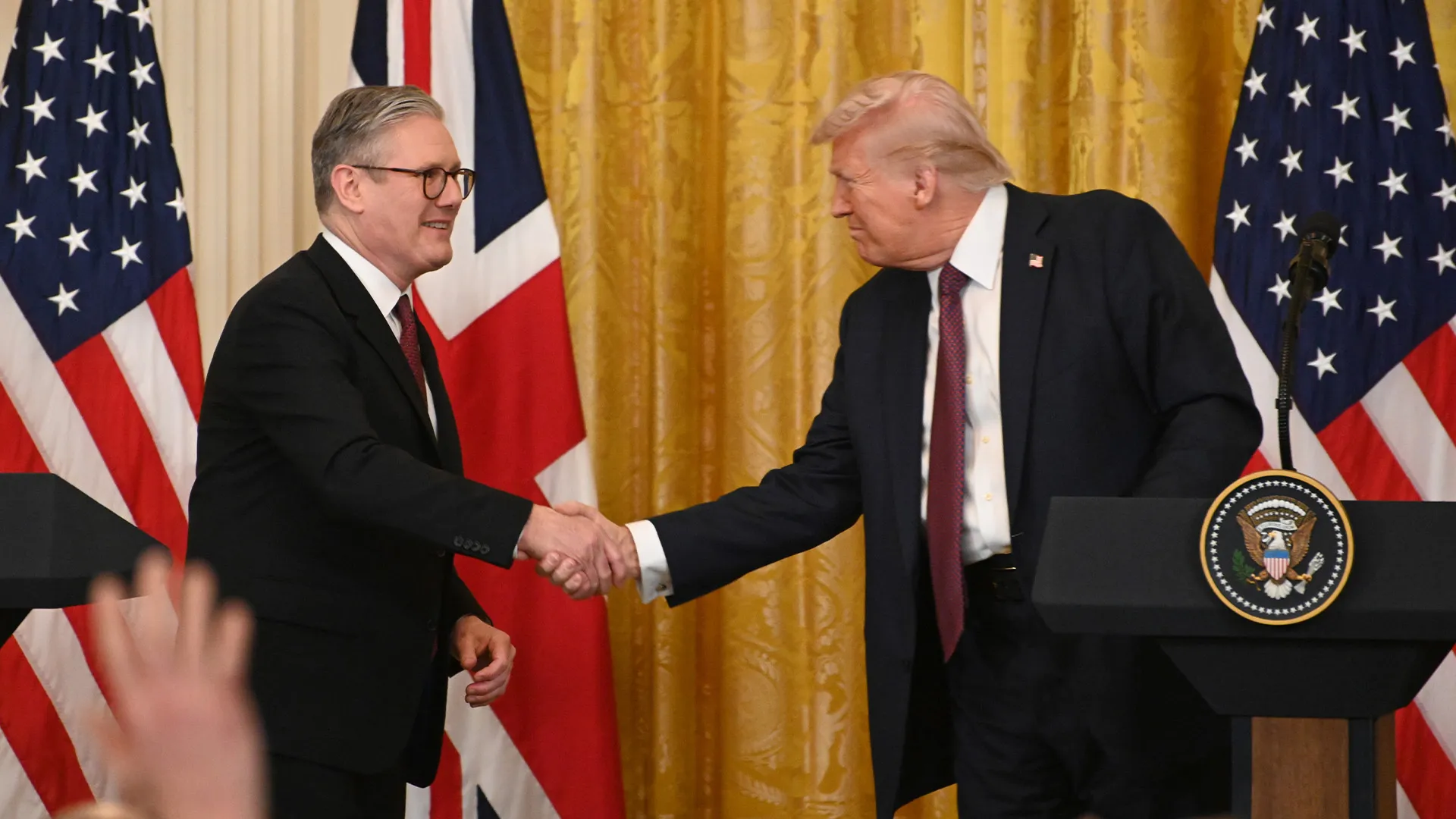In a move that could radically reshape the global technology landscape, the United States and the United Kingdom are finalizing a multibillion-dollar strategic tech partnership during former President Donald Trump’s high-profile visit to London. Far more than a ceremonial gesture, this landmark accord signals the next phase in a deepening transatlantic alliance, driven by shared ambitions in artificial intelligence, quantum computing, semiconductors, telecommunications, and next-generation data-centre infrastructure.
The deal is being heralded as a transformative leap in digital diplomacy, as global powers race to control the future of computation, intelligence, and infrastructure. For both countries, the agreement is not just about innovation—it’s about sovereignty, security, and strategic positioning.
Strategic Stakes: Why the Deal Matters
At a time when AI and quantum computing are no longer fringe but central to national competitiveness, this agreement represents a unified geopolitical counterweight to growing tech dominance from China and regulatory assertiveness from the European Union.
From advanced chip design to sovereign AI models, the deal aims to weave together both nations’ technical capabilities, talent pools, and capital networks. According to multiple sources, executives from leading U.S. AI and chip firms—including Nvidia CEO Jensen Huang and OpenAI’s Sam Altman—are accompanying President Trump to London, highlighting the commercial weight behind the initiative.
Core Areas of Cooperation
The agreement is expected to encompass:
- AI Infrastructure: Investment in sovereign data-centres to host large language models (LLMs) and advanced compute.
- Quantum Research: Joint R&D funding for scalable quantum hardware and algorithms.
- Semiconductors: Initiatives to build resilient chip supply chains across the Atlantic.
- Telecommunications: 6G and post-5G technology collaboration to reduce dependency on adversarial infrastructure.
- Energy & Cooling: Co-development of sustainable infrastructure to power and cool data-heavy workloads.
According to Reuters, the financial commitments already total over £1.25 billion (approx. $1.69 billion) from U.S. financial giants like Citigroup, Bank of America, PayPal, and S&P Global. In parallel, BlackRock has announced a $700 million investment into new UK data-centres, underlining the deal’s hard infrastructure component.
The UK’s Bold AI Repositioning
For the UK, this agreement could be a game-changer. Post-Brexit, the country has struggled to maintain parity with the EU in digital policy but has leveraged its common-law framework, world-class universities, and a thriving startup ecosystem to attract global tech investment.
This deal reaffirms the UK’s strategy to become a sovereign hub for frontier technologies, especially in areas like AI safety, foundational model regulation, and compute capacity. With pressure mounting to host and deploy massive AI workloads natively—rather than relying on U.S.-based infrastructure—this initiative answers a long-standing need.
In fact, this cooperation builds on prior efforts, such as the UK’s push for AI Safety Institutes and its earlier convening of the AI Safety Summit at Bletchley Park.
U.S. Interests: Strategic Projection Through Technology
From Washington’s perspective, the UK serves as a stable and ideologically aligned partner in an increasingly fragmented tech world. By investing in joint infrastructure and shared R&D pipelines, the U.S. ensures that its AI models, chips, and quantum technologies can scale safely and legally within friendly jurisdictions.
This deal comes at a time when Congress and U.S. agencies are doubling down on AI risk assessments, chip export controls, and international AI governance. A UK partnership gives the U.S. a stronger European foothold without entanglements in EU regulatory complexity.
The Investor Signal: AI Infrastructure Is the New Gold Rush
Beyond statecraft, this deal sends a strong signal to global investors: AI infrastructure is the new strategic commodity. With cloud giants struggling to meet rising AI workloads and power constraints affecting new buildouts, this U.S.–UK push could shift the centre of gravity in global AI deployment.
Emerging cities in the UK—such as Manchester, Bristol, Belfast, and Cambridge—are expected to benefit from job creation, data-centre construction, and educational partnerships. According to insiders, up to 10,000 new tech-related jobs could be generated in the next five years as a direct result of the pact.
Risks and Ambiguities: What Remains Unclear
Despite the glowing announcements, several critical challenges remain:
- Implementation Risk: Execution timelines for such massive infrastructure and policy alignment are notoriously unpredictable.
- Regulatory Friction: Data privacy, model governance, and export controls could clash across jurisdictions.
- Energy Constraints: UK data-centres are already facing power grid saturation; new builds will need to address sustainability.
- Public Scrutiny: Concerns over surveillance, ethical AI deployment, and U.S. influence over UK tech policy are likely to surface.
Moreover, critics point to the opacity around the AI components of the deal—questions persist about who controls the models, where data is stored, and how safety is ensured.
A New Blueprint for Digital Diplomacy?
If successful, this could be a blueprint for next-generation tech diplomacy. Unlike Cold War-era pacts built on arms and oil, today’s partnerships are being forged in GPUs, data centres, and AI regulation.
As geopolitical competition increasingly revolves around digital capability rather than physical territory, alliances like the U.S.–UK AI pact could define the next decade of global power dynamics.
Whether the promises materialize or not, one thing is clear: the age of AI geopolitics has officially begun—and this deal just drew its first bold line across the Atlantic.





